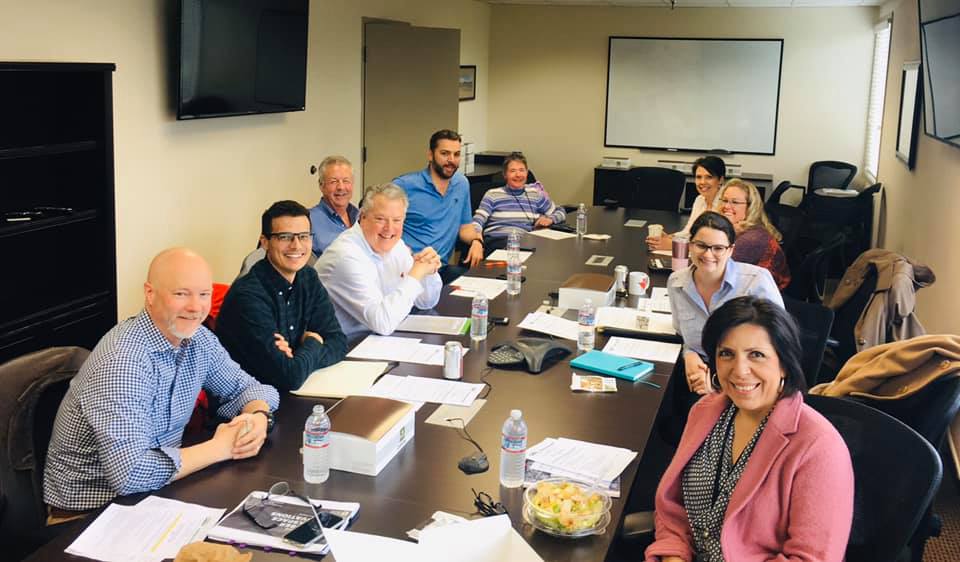Generational Diversity a Distinct Advantage

It’s not unusual to find five generations present in today’s workplace. Some might see the challenges of managing or leading a team comprised of traditionalists to Gen Z’s a cumbersome one. Others, myself included, build for and view a multigenerational team as a distinct and competitive advantage.
I’ve come to appreciate the insightful and intuitive leadership style of chamber leaders. We are at the epicenter of community and business leadership, and always keep our eye on the ball and ear to the ground when it comes to effective management and productive culture. Generally, we have a pretty keen eye for what works and what doesn’t work in complex organizational management scenarios, like chambers.
At a conference of Oregon chamber professionals last fall, a dozen or so of us gathered around the fireplace comparing notes on the day’s trainings, and other shared experiences of our Chamber life. I’d signed up the whole team for the conference – a great professional development and teambuilding opportunity. It was the end of the first day, and true to form the team had been fully engaged in the learning and peer networking, representing Springfield Chamber as the credible and resourceful organization it is.
I’ll admit, I’m generally the first to claim bragging rights on the talented group of individuals we employ here. However on this occasion, the complements came unsolicited: “Vonnie, we were just talking about your team and how great they are. You’re so fortunate,” a colleague from the Portland metro area said. I humbly accepted, “I know, I truly am,” expecting the conversation to move on to the next subject. They weren’t finished. These accomplished and experienced execs had seen something beyond the obvious core competencies of professionalism, likeability, and intelligence. They zeroed in on the generational diversity of our team. With a hint of surprise someone commented, “and they get along so well!” Well now, that’s very true. Just about that time, laughter rang out from none other than the Springfield team huddled nearby comparing their own notes with a couple of other chamber pros.

Springfield Chamber Committee Leaders
Here’s what I gather my colleagues’ observed – a competent, professional, and age diverse team who truly enjoyed each other’s company, respected one another’s views, and were finding value in learning alongside each other and alongside an equally diverse group of attendees at the conference.
It was enough to inspire a casual but meaningful discussion around generational diversity in the workplace, why it’s important, the value to our members, our chambers, and how we benefit by integrating diversity in our workplace culture.
What a proud and satisfying moment it is when what you’ve built, witnessed, and experienced as a leader with your own team demonstrates value beyond, far beyond, that inner circle.
Since then, I’ve made an effort to increase my own awareness of our generational (all five generations in our case) competencies and communication styles, and more importantly, sought to reinforce these in our culture.
Each generation represents a diverse, often different, and always potentially complementary set of work ethic, competencies, and values. Having built and worked with this team of “traditionalist, boomer, and gen X,Y, and Z’er”, seen them in action and in interaction, I wouldn’t want it any other way.
Here are a few ways we’ve benefited from purposefully managing, cultivating, and leading a multigenerational team:
- Helps develop interpersonal soft skills like empathy, patience, and humility and therefore more adept in relational competencies;
- Demands well-rounded and refined communication skills: listening to learn (rather than listening to respond), finding common ground, and communicating through uncomfortable or disagreeable conversations;
- Requires we practice and refine our “high context” thinking and problem-solving skills; that which connects ideas and views we might otherwise not consider, and that which opens our world view to new possibilities; and
- Offers cross-training, mentoring, and coaching opportunities that build great collaborators, managers, and leaders.
It’s likely that you manage or lead a multi-generational workforce. It’s also possible that you count all five generations present in your workforce. I’d love to hear from you on your experience with generational diversity in the workplace: how you’re leading, how you address hurdles, any resources you’ve found, and who you’re following.
Email me at: vonnie@springfield-chamber.org
Infograph and general characteristics of the five generations
in the workplace
(Source: Purdue University)
Discover more from Springfield Bottom Line
Subscribe to get the latest posts sent to your email.




